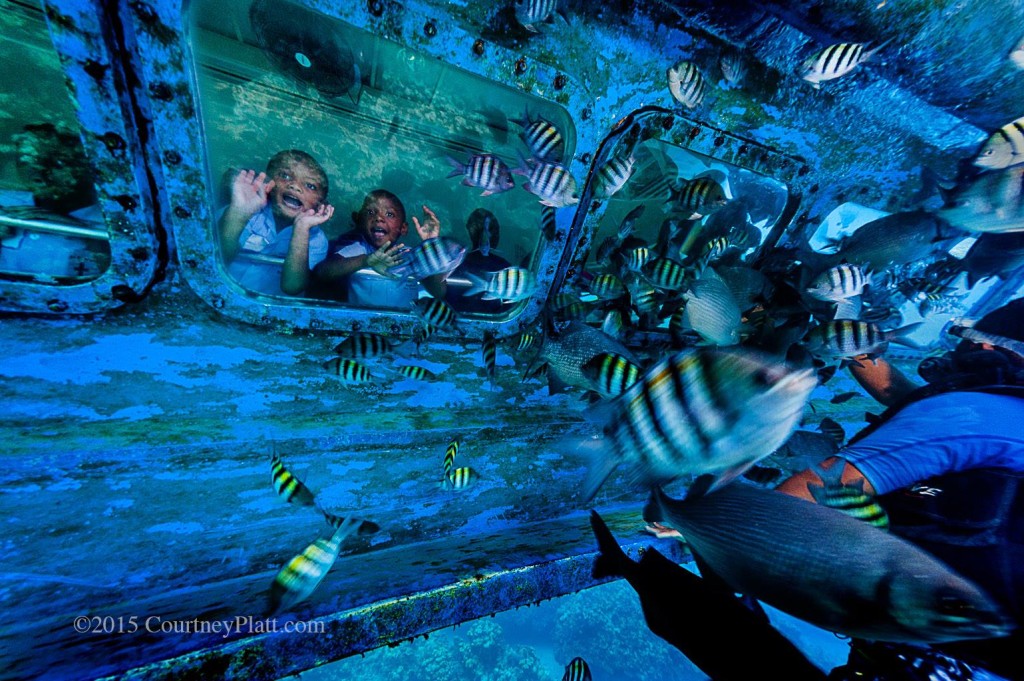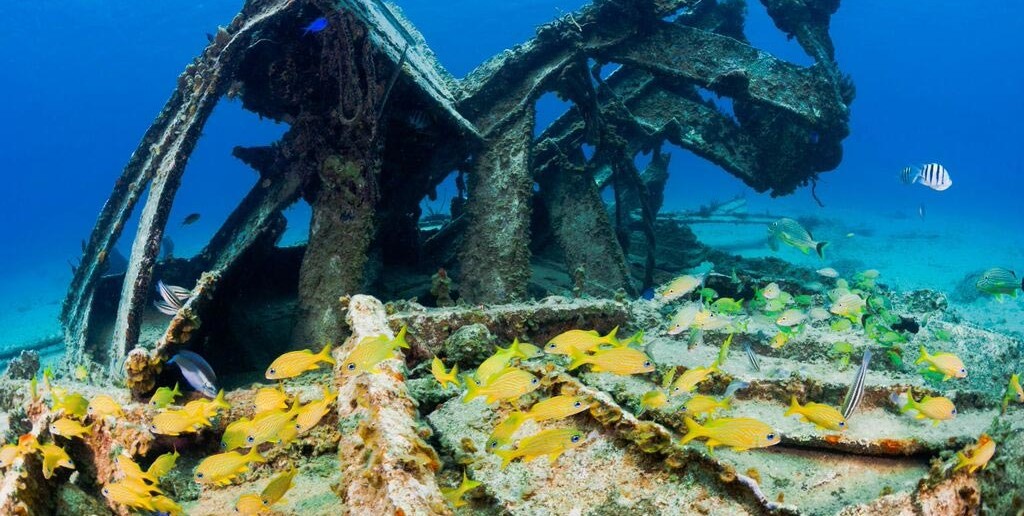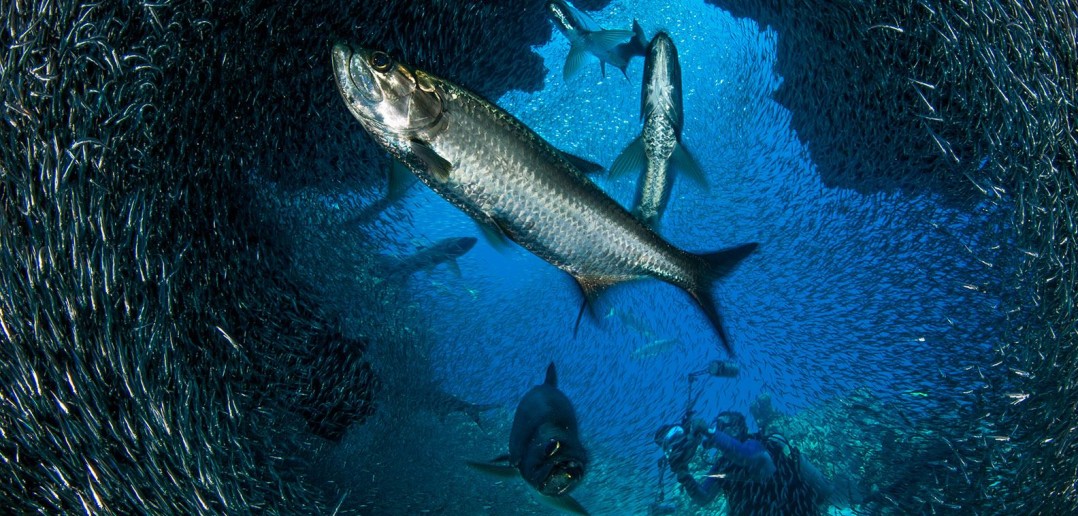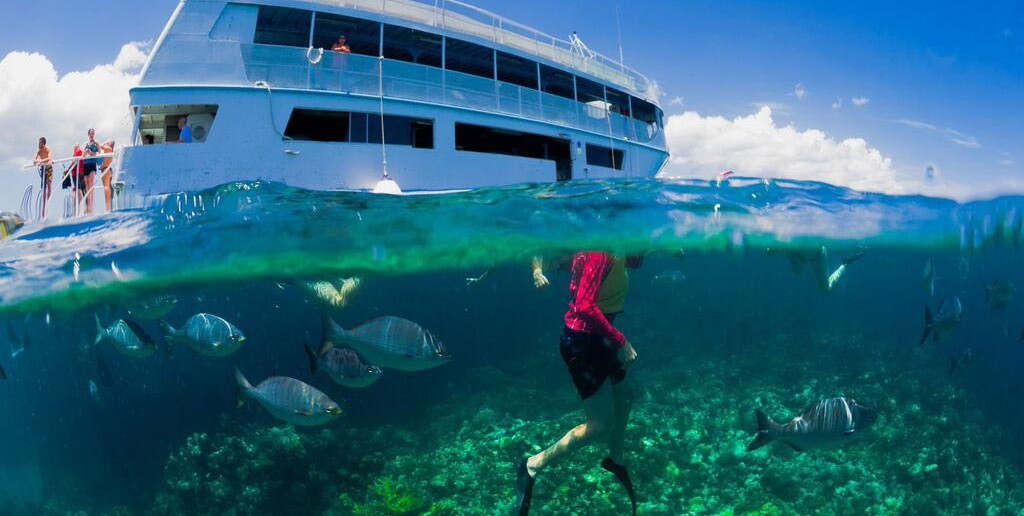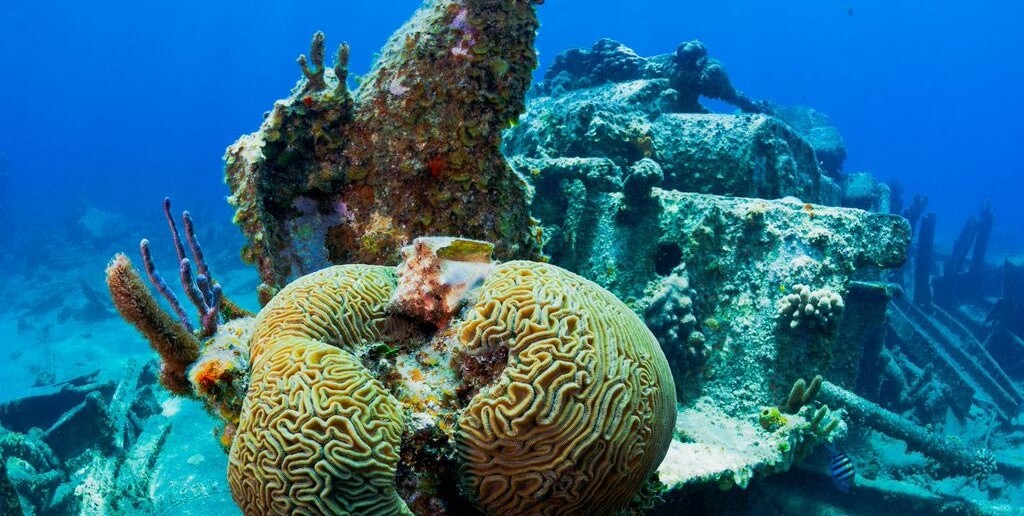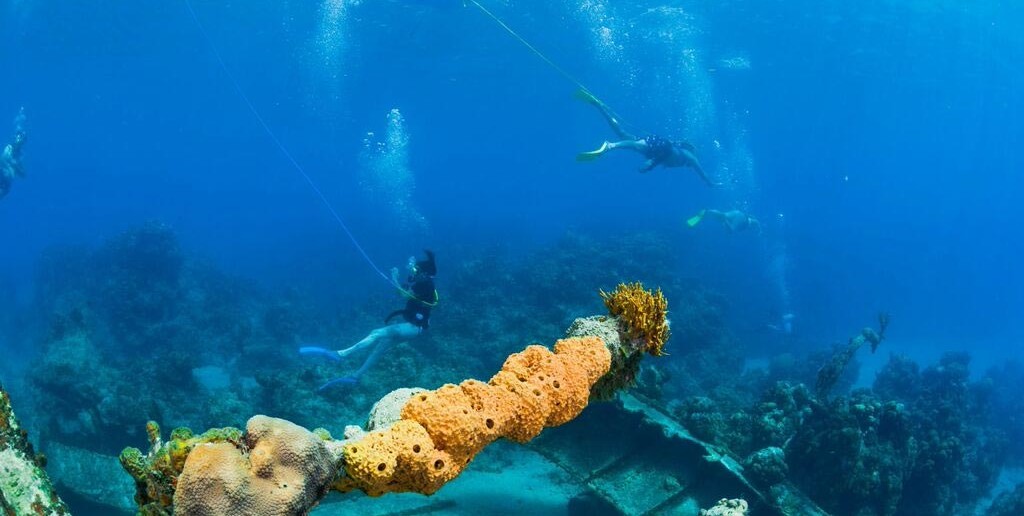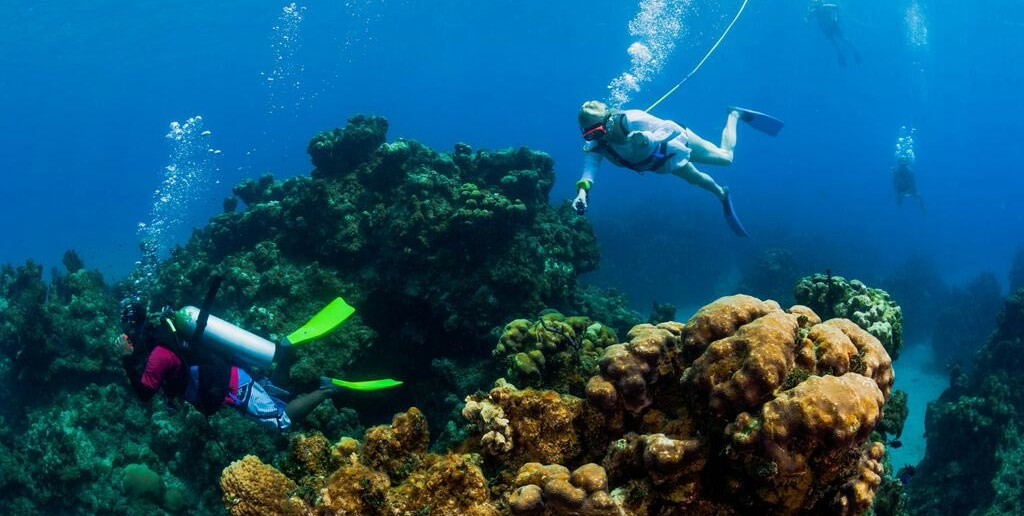Local Campaign to Highlight Dive Sites and Underwater Attractions in George Town Harbour in Full Swing
The President of the Florida-Caribbean Cruise Line Association (FCCA) says they have not seen the Cayman Islands government’s plan to build a $150 million berthing facility in George Town Harbor, and despite people publicly alluding to it, Michelle Paige clarified that the association has had no input in the project designed to accommodate 4 cruise ships at once, including two of the new megaships being built to carry up to 6000 passengers.
“We have not seen anything related to how it’s going to be built,” said Paige during a telephone interview with the Cayman Bottom Times. She added that the Association became aware of the project about six months ago during a routine update from the Cayman Islands government, as expected from all their destinations.
An environmental impact study released in June indicates that dredging for the project, and its resulting silt plume, will destroy 15 acres of pristine coral reef and related areas in George Town Harbour. Designated a marine park, this area includes some of Grand Cayman’s best-known dive sites; Soto’s Reef, Eden Rock, Devil’s Grotto and the historic Wreck of the Balboa. The study also indicates another 30 acres of adjoining reefs will be affected by the dredging and resulting turbidity.
This has galvanized the watersports community, both in Cayman and abroad, and a campaign is underway to halt the project, or convince government to come up with an alternate plan. Michelle Paige says the FCCA has been monitoring the debate on both sides of the issue.
“The cruise industry is always in favor of protecting the environment,” she said. “We always underline the importance of the environment. At any time we stand ready to review the project, but this is up to the government to proceed. We respect the government of the Cayman Islands to do the right thing.”
Speaking at the 2015 Cruise Shipping Miami Conference in March, Paige said the Caribbean has evolved as the most important cruise market with more than 20 million passengers expected this year. The Caribbean, she noted offers a unique collection of cultures, cuisines and a history that gives the region an individual identity. Paige told the assembly that these features are crucial in light of a recent survey confirming that cruise passengers are more interested in destinations than ships, valuing cultural heritage and culinary experiences. The FCCA President said the Association helps Caribbean destinations brand themselves, using their unique history and offerings to tempt passengers, driving demand for repeat cruisers.
Red Sail Sports Operations Manager Rod McDowall points out that thousands of divers and snorkelers, including cruise ship passengers, enjoy these sites in the harbour’s crystal clear waters every year.
“Taking a tender to shore is part of the experience that Cayman now offers to cruise ship passengers,” he said. “They start their adventure by boating across the clear water of the Harbour to shore, and then a lot of them go snorkeling to one of the nearby sites, or they take a glass bottom boat ride to the reef, or a ride on the Atlantis Submarine. What are they going to do if all that is gone? Why not just improve the tendering facilities that now exist?”
“Even with my business located in East End, many of my regular customers’ introduction to Cayman was via a visit on a cruise ship,” adds Steve Broadbelt co-owner of Ocean Frontiers. “Conversion’ is of real benefit to the ‘Stay-Over’ tourism businesses here.”
Save Cayman, a grassroots effort by watersports operators and environmental activists that oppose the dock project is helping showcase the snorkel and dive sites of the harbor in the belief that if people know what is underwater, they will value, cherish and protect it. Photos and videos are posted daily at www.savecayman.org. Visitors to the website can also sign a petition urging the government to reconsider the plan. Spearheading the campaign is Keith Sahm, General Manager of Sunset House, known for its quality shore dives, and in the projected plume path.
“We are very concerned with the proposed berthing facility as proposed in this latest EIA,” he said. “While the dredge site area is threatening George Town Harbor, one of the main cruise and stay-over tourism areas, the concern for Sunset House and other operations, is the fine silt from the dredging process that will linger in the water for years. When this gets stirred up it can harm the healthy coral colonies and reefs to the North and South of this proposed project. We can’t predict what will happen in the future.”
The threat to Cayman’s reefs and dive sites has spurred action by international environmentalists and the largest dive association in the world. World-renowned oceanographer and explorer Sylvia Earle is asking her legions of followers on social media to get involved in the struggle to stop the project.
“This scenario is repeating itself across the globe, and the big money usually wins. If you love Grand Cayman the way we do, please send your comments now,” she wrote.
Dive Equipment Manufacturers Association (DEMA) issued a public statement stressing Cayman’s vital role in the development of diving as a sport and urging the government not to press ahead.
“The direct and indirect loss of as much as 30 acres of living reef will be irreversible and devastating to Cayman and to the world diving community,” DEMA stated.
Marine Biologist Ellen Prager, a frequent visitor to Cayman and Sunset House, is also speaking out. “Grand Cayman has progressively put in place policies to protect their natural resources—for instance protection for sharks and rays—and help sustain responsible tourism. This plan seems to go against that, so just say no to the current plan!” she says.



